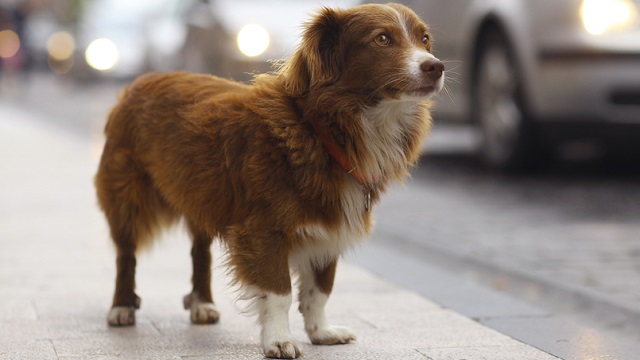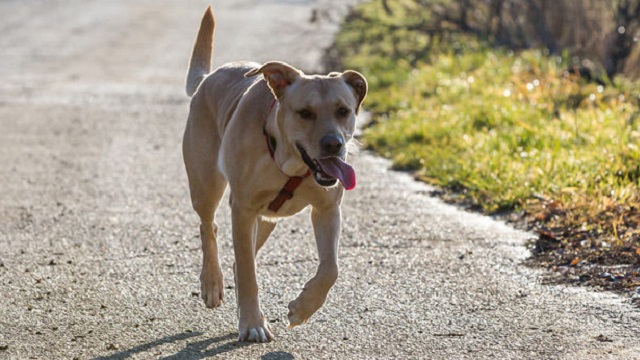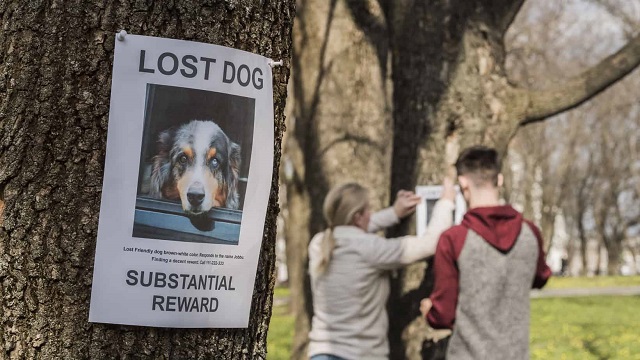Noticing that your most beloved fellow has escaped will always leave you worried. A dog tag or a pet tracker may be very useful tools to help you prevent your furry friend from escaping, but if you don’t have either of those, you’re better off taking the first steps to find your lost dog. Although dogs are often more active – and easier to find – at dusk and dawn, you should act immediately after you confirm they’re lost! Therefore, let’s try to predict where they might be and increase your chances of finding a lost dog after 24 hours. Courage: you’ll find your four-legged friend! ?️
Lost dog statistics

Before delving into the chances of finding a lost dog after 24 hours, let’s look at some statistics.
In 2012, the American Society for the Prevention of Cruelty to Animals’ survey about lost dogs concluded the following:
- Only 15% of pet guardians reported a lost dog or cat during the previous five years.
- Percentages of lost dogs versus lost cats were nearly identical: 14% for dogs and 15% for cats.
- 93% of dogs and 75% of cats reported lost were eventually returned to their homes safely.
- Only 6% of dog owners and 2% of cat owners found their lost pets at shelters.
- 15% of dogs were found because they were sporting identification tags or microchips.
The wiki website Wikihow also gives some insight on lost dogs, saying that you have a 90% chance of finding your missing friend in the neighborhood during the 12 hours following they escape.
Finally, according to FidoFinder, the lost dog database, 16% of lost dogs manage to find their way and reunite with their pet parents. Let’s hang onto this last one! ?
Why dogs run away

Basically, there are three main reasons why dogs run away: opportunity, wanderlust, and blind panic. So, let’s check them one by one!
Opportunity
“What? The remote didn’t work as expected and the front gate is open? Here I go!” ? This is how many dogs react, and they won’t waste the unique chance of going on a solo quest! Since this is their first reaction, many pet parents think their dog is unhappy and that’s why they intended to leave. Let us just attenuate your soul: that’s not the case! Even if you’re a wonderful pet parent, they may still be attracted by something and get lost in their journey because they were not careful.
Wanderlust
From the German words “wandern” (“travel”) and “lust” (“wish”), this condition consists in a strong impulse to wander and travel. Dogs who “suffer” from wanderlust are very likely to escape – they climb, they jump, they dig… they just can’t control themselves! ?
Blind panic
A dog can get lost due to blind panic for three main reasons: skittish personalities, traumas caused by accidents they’ve previously suffered, or loud noises (thunder, fireworks) – this last one explains why a high number of dog disappearances are always registered on the 4th of July! ? As they’re very fearful, dogs who escape because of blind panic are the most difficult to catch – they can travel long miles until they find a quiet place to stay.
Lost dog behavior

Even if your dog isn’t usually afraid of anything, they may display fearful behavior when they get lost. Some lost dogs may be able to cool down and get along with people trying to help them; on the other hand, others may run from every single person who stands on their way.
If you suspect a certain dog is lost, calling them might not always be the best course of action: they can interpret this as a warning – “be afraid of me!” – because strangers have possibly done the same before, leading the dog to react fearfully: “who are you? I don’t know what your intentions are”! ? Instead of calling, simply go towards them very, very easily – a tasty dog treat may be helpful! ?
How far can a dog travel in a day?

Use your best intuition skills, grab a compass and start trying to track your dog. For this effect, we’ll point out the six major factors which can influence the distance your furry companion has traveled: temperament, circumstances, weather, terrain, appearance, and population density.
1. Dog temperament
When interacting with strangers, dogs may behave in one of three ways:
- Gregarious Dogs – very sociable, you only need to say “hello” and it’s like they’re falling in love with you… or with strangers! That’s why gregarious dogs are the most likely to be adopted by passers-by.
- Aloof Dogs – these ones always act with caution when they’re approaching humans. They can even avoid all contact with people, unless they start to get hungry. Because of that, aloof dogs can travel great distances all alone, so their aspect can be that of a homeless, dehydrated and starving dog… ?
- Xenophobic Dogs – the anti-social dog who fears strangers. To passers-by, they’ll seem as if they were abused, mistreated and bullied, so these persons won’t likely try to find the dog’s previous owners, but instead to “save the dog”. Be careful when approaching them, otherwise they’ll flee.
2. Circumstances
Your surroundings are also very important. Just take a walk around your neighborhood and try to guess what might have attracted your dog. Maybe the smell of roasted chicken at the restaurant nearby? Is the neighbors’ dog looking for a mate? Or did the fireworks cause blind panic on your companion?
3. Weather
If it’s a sunny day, dogs are more likely to cover great distances. On the other hand, rain and snow may force them to stop and look for shelter where they’ll be safe.
4. Terrain
The land you’re in can also create some barriers. Bushes, cliffs and other natural obstacles will influence the distance your dog might travel, while open areas will “invite” them to walk farther.
5. Appearance of the Dog
As previously mentioned, the aspect of a lost dog might influence whether or not they’ll be adopted by a passer-by. Also, their size matters: a “pocket” dog will be easy to grab and carry, while larger dogs won’t. And, of course, people are usually more likely to adopt a purebred than a mixedbred dog, although both have the capacity to love us in the same way… ? In contrast, when people suspect a purebred dog is lost, it’s because “they probably belong to someone”, while a stray dog is just “the guy who lives here and there around the neighborhood”.
6. Population Density
Many people? They represent more obstacles for your dog’s escape, and at the same time a higher probability of them being found.
In sum, your chances of finding a lost dog after 24 hours depend very much on the reasons which made them escape, their “lost dog personality” and the six key factors which will make them likely to travel or not. Again, don’t forget our list of essential steps on how to find a lost dog. And be strong: they’ll be back!






